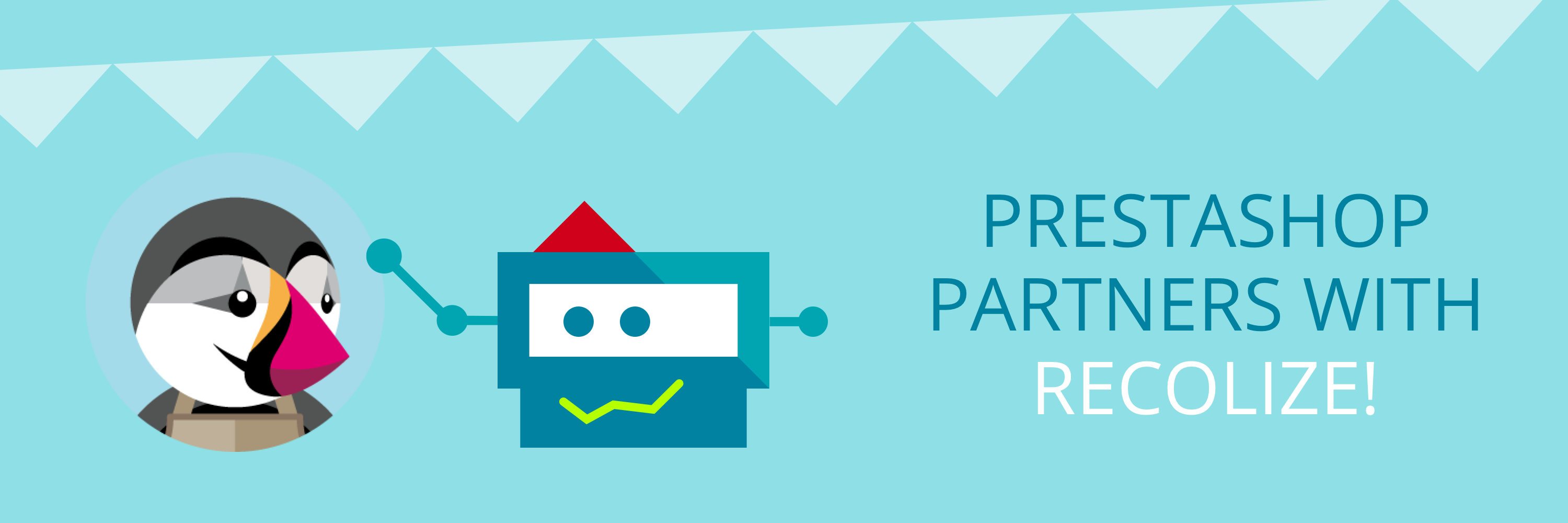Michael
Recolize Emerges on the Australian Market through a Partnership with Magenable
The partnership enables us to easily integrate our Recommendation Engine for customers at the other end of the world. Magenable helps us to provide one of our main goals in Down Under: an easy, perfect and fast integration within minutes.
10 ways to optimize your conversion rate with personalized recommendations – part 3
Personalization is not alike personalization. With the following tips you make your website more unique and improve the customer journey with personalized recommendations even on otherwise static pages.
10 ways to optimize your conversion rate with personalized recommendations – part 1
In the first part of the series we start with two simple points. Or aren’t they that simple?
Recolize Quick Start Guide
Personalized recommendations: a must-have – guest article at the Netresearch App Factory Blog
A possible solution for Dropshipping in Magento – guest article at the Webguys Magento Blog
Individual product feeds
Nowadays prominent brands like Zalando or About You strengthen the customer relationship by using personalized product recommendations. The best examples are the recently launched product feeds “Your Zalando” and “Your Feed“: On a separate page the customer is presented a completely tailored choice of products that change with every click, purchase or rating by him or other customers with similar profiles. Exactly the opposite of the static product lists which are used in most of the existing online shops.
Furthermore also the popular eBay Marketplace personalizes your shopping experience with its “eBay Feed” feature.
Comparing offline and online product recommendations
Many Magento shops offer product recommendations like the well-known “Customers who bought this also bought”. Everyone knows these recommendations from various global e-commerce players. The product recommendations are generated by several sources like e.g. the clicks and sales of a customer compared to the masses – which means to other customers in a shop.
Let’s adapt this special kind of product recommendations to the offline world and use a clothing shop as an example. Think of a visit in an offline shoe store. You enter the shop and look around for finding the right shoe. Eventually you don’t even want to buy something but just poke around for some inspiration.
How do you get your recommendations in an offline store?
You’re looking around and you will mostly find a standard categorization for different kinds of shoes: sport shoes, high heels, loafers etc. – on the right side for ladies and on the left for men. Eventually you find some marketing banners hanging from the ceiling and making special offers. This classical way of finding the right product is very well known to all of us and is approved for many decades. This phisically quite exhausting offline shopping experience is also supported by not overexerting us with thousands of different shoes.
Compared to the online world this seems to be a very complicated way of finding the right shoes. But the huge difference is that you normally don’t have this immense mass of different shoes compared to most online shops. This mass of products makes the big difference why you need to get products recommended which are matching your personal profile. If you don’t know what you want you can get lost and overstrained very quickly. In the offline world it is much easier to get along with the offered product range.
Personal contact is very important
The main advantage of the offline shopping experience is the personal advices you get by the more or less self confident customer consultants. If you like her or him and the advices are matching and presented nicely, the chance of buying is much higher.
In the online world automatic product recommendations can do some of the jobs of an offline shop customer consultant. And they can even learn more about the customer and improve their advices. Also the huge bunch of different products can be an advantage because every kind of customer type can be catched. And the poking customers are also still known when they visit your online shop the next time to really buy something.
A possible conclusion
Both worlds have their advantages. Of course. But more and more customers around the globe appreciate the online experience with a much bigger product range and a comfortable way of comparing products. Great personalized product recommendations like “Customers who bought this also bought” can be a very helpful way for customers browsing through large product catalogues and also for shop owners to offer the right and matching products. Or even upsell other products compared to a selected product.
January until March – the worst months for e-commerce?
But the months January until March are not only hard months for us but also for e-commerce companies, aren’t they?




